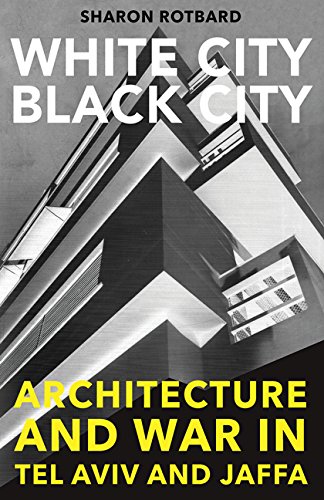

Most ebook files are in PDF format, so you can easily read them using various software such as Foxit Reader or directly on the Google Chrome browser.
Some ebook files are released by publishers in other formats such as .awz, .mobi, .epub, .fb2, etc. You may need to install specific software to read these formats on mobile/PC, such as Calibre.
Please read the tutorial at this link: https://ebookbell.com/faq
We offer FREE conversion to the popular formats you request; however, this may take some time. Therefore, right after payment, please email us, and we will try to provide the service as quickly as possible.
For some exceptional file formats or broken links (if any), please refrain from opening any disputes. Instead, email us first, and we will try to assist within a maximum of 6 hours.
EbookBell Team

5.0
70 reviewsThe history of Tel Aviv, presented for a moment as an architectural history, can be seen as a part of a wider process in which the physical shaping of Tel Aviv and its political and cultural construction are intertwined, and plays a decisive role in the construction of the case, the alibi, and the apologetics of the Jewish settlement across the country. -- White City, Black City
In 2004, the city of Tel Aviv was declared by UNESCO a World Heritage Site, an exemplar of modernism in architecture and town planning. Today, the Hebrew city of Tel Aviv gleams white against the desert sky, its Bauhaus-inspired architecture betraying few traces of what came before it: the Arab city of Jaffa. In White City, Black City, the Israeli architect and author Sharon Rotbard offers two intertwining narratives, that of colonized and colonizer. It is also a story of a decades-long campaign of architectural and cultural historical revision that cast Tel Aviv as a modernist "white city" emerging fully formed from the dunes while ignoring its real foundation -- the obliteration of Jaffa. Rotbard shows that Tel Aviv was not, as a famous poem has it, built "from sea foam and clouds" but born in Jaffa and shaped according to its relation to Jaffa. His account is not only about architecture but also about war, destruction, Zionist agendas, erasure, and the erasure of the erasure.
Rotbard tells how Tel Aviv has seen Jaffa as an inverted reflection of itself -- not shining and white but nocturnal, criminal, dirty: a "black city." Jaffa lost its language, its history, and its architecture; Tel Aviv constructed its creation myth. White City, Black City -- hailed upon its publication in Israel as "path-breaking," "brilliant," and "a masterpiece" -- promises to become the central text on Tel Aviv.
Praise for the Israeli edition of White City, Black City
"A path-breaking and brilliant analysis." -- Eyal Weizman, author of Hollow Land
"A challenging book that deserves to be read and argued." -- Tom Segev, Haaretz